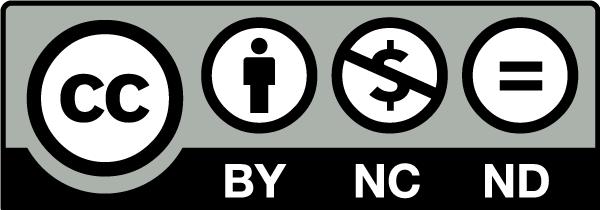The Truth in the Script and the Untruth in the Movie: Tarantino’s Rewriting of American History
DOI:
https://doi.org/10.13136/2281-4582/2021.i18.994Keywords:
screenplay studies, Quentin Tarantino, historical movies, post-truthAbstract
In his historical movies, Quentin Tarantino rereads and rewrites three critical moments of the American past. An interesting strategy he uses is that of introducing different imaginary artifacts into the narration: a film-within-the-film (The Pride of a Nation) in Inglorious Basterds (2009), KKK hoods in Django Unchained (2012), and the Viking crucifix in The Hateful Eight (2015). This article aims at investigating how such a transmedia adaptation of these fictitious elements, from the scripts into the movies, defines three ekphrastic sections that overturn the relationship between truth and falsehood. This process can be analyzed in light of Michele Cometa’s theory about the connection between literature and visuality; in the critic’s understanding, the ekphrasis of a real artifact represents a falsification of the work itself, due to the fact that during the adaptation it is in some way altered. Conversely, the ekphrasis of a fictional artifact can be interpreted as a validation of the given object because it is created during the transition process. From this perspective, the artifacts inserted by Tarantino in the mentioned screenplays can be considered ‘true’ since their mental images are brought to life thanks to verbal language. However, once they are inserted into the movies they become ‘false’ because the cinematographic language alters their ‘written form,’ depriving them of their claimed truthfulness. Thus, Tarantino deliberately intermingles facts and fiction to produce a national post-truth narration which is, in Lee McIntyre’s words, “a form of ideological supremacy, whereby its practitioners are trying to compel someone to believe in something whether there is good evidence for it or not” (2018, 13).References
Barnes, Geraldine. Viking America: The First Millennium. Cambridge: D. S. Brewer, 2001.
Bauer, Erik. “Method Writing: Interview with Quentin Tarantino.” Creative Screenwriting 10 August 2013. https://creativescreenwriting.com/method-writing-interview-with-quentin-tarantino/. All websites last visited on 14/07/2021.
Bordin, Elisa. “Mumbo Django: Afroamericanità e western.” Iperstoria 2 (2013). https://iperstoria.it/article/view/654.
Bordwell, David and Kristin Thompson. Minding Movies: Observations on the Art, Craft, and Business of Filmmaking. Chicago: University of Chicago Press, 2011.
Bosco, Stefano. “Un western al secondo grado: la forma parodica in Django Unchained.” Iperstoria 2 (2013). https://iperstoria.it/article/view/617.
Botta, Enrico. “Desiderai un nuovo mondo.” La letteratura dell’impero americano sulla Ricostruzione. Verona: Ombre corte, 2020.
Brody, Richard. “The Worst Thing About ‘Birth of a Nation’ Is How Good It Is.” The New Yorker 1 February 2013. https://www.newyorker.com/culture/richard-brody/the-worst-thing-about-birth-of-a-nation-is-how-good-it-is.
Brown, Lane. “In Conversation with Quentin Tarantino.” Vulture 23 August 2015. https://www.vulture.com/2015/08/quentin-tarantino-lane-brown-in-conversation.html.
Carr, Joi. “Introduction: Django Unchained—Disrupting Classical Hollywood Historical Realism?” Black Camera 7.2 (2016): 37-44.
Chagollan, Steve. “Quentin Tarantino Tackles the Western in Classic Roadshow Fashion.” Variety 21 December 2015. https://variety.com/2015/film/features/tarantino-revives-roadshow-epic-with-hateful-eight-1201663276/.
Chitwood, Adam. “Quentin Tarantino Reiterates Plans to Retire After 10 Movies.” Collider 2 July 2019. https://collider.com/quentin-tarantino-retiring-once-upon-a-time-in-hollywood/.
Coates, Kristen. “Hyperreality in Inglorious Basterds: Tarantino’s Interwoven Cinematic World in 1940s France.” The Film Stage 26 June 2010. https://thefilmstage.com/the-classroom-hyperreality-in-inglourious-basterds-tarantinos-interwoven-cinematic-world-in-1940s-france/.
Colón Semenza, Greg M. “The Ethics of Appropriation: Samson Agonistes, Inglourious Basterds, and the Biblical Samson Tale.” Adaptation 7.1 (2014): 62-81.
Cometa, Michele. La scrittura delle immagini: letteratura e cultura visuale. Milano: Cortina, 2012.
Corrizzato, Sara. “Django, Stephen, e gli stereotipi sugli afroamericani.” Iperstoria 2 (2013). https://iperstoria.it/article/view/631.
“Creating the Klan: Quentin Tarantino’s Creation of the KKK in Django Unchained.” That’s 30 Minutes Away...I’ll Be There in 10 7 March 2013. https://daronb.wordpress.com/essays/essay-1/.
Cunningham, Valentine. “Why Ekphrasis?”. Classical Philology 102.1 (2007): 57-71.
Dassanowsky, Robert von, edited by. Quentin Tarantino’s Inglourious Basterds: A Manipulation of Metacinema. London: Bloomsbury Publishing, 2012.
De Groot, Jerome. Remaking History: The Past in Contemporary Historical Fictions. New York: Routledge, 2015.
Deemer, Charles. “Are Screenplays Literature?”. Ibiblio 5 June 2002. http://www.ibiblio.org/cdeemer/cfs0602.htm.
Denby, David. “Americans in Paris.” The New Yorker 17 August 2009. https://www.newyorker.com/magazine/2009/08/24/americans-in-paris.
Dikovitskaya, Margaret. Visual Culture: The Study of the Visual After the Cultural Turn. Cambridge: MIT Press, 2006.
Dixon, Thomas. The Clansman: An Historical Romance of the Ku Klux Klan. Scotts Valley: Createspace Independent Publishing Platform, 2018.
Eisenstein, Sergei M. Selected Works. Volume 2: Towards a Theory of Montage. Edited by Michael Glenny and Richard Taylor. London: British Film Institute, 1991.
Fitzhugh, William and Elisabeth Ward, edited by. Vikings: The North Atlantic Saga. Washington, D.C.: Smithsonian Institution Press, 2000.
Fleming, Mike. “Quentin Tarantino Sets Two-Book HarperCollins Deal; Once Upon A Time in Hollywood Novelization & ’70s Movie Deep Dive ‘Cinema Speculation’ To Follow.” Deadline 17 November 2020. https://deadline.com/2020/11/quentin-tarantino-two-book-deal-harpercollins-novel-once-upon-a-time-in-hollywood-cinema-speculation-70s-movie-deep-dive-1234616927/.
Fuller, Graham. “Answers First, Questions Later.” Quentin Tarantino: Interviews, Revised and Updated. Edited by Gerald Peary. Jackson: University Press of Mississippi, 2013. 49-65.
Fusco, Serena. “‘A Little Somethin’ You Can’t Take Off’: La storia e il cinema di Quentin Tarantino.” Ácoma 22.9 (2015): 69-85. http://www.acoma.it/sites/default/files/pdf-articoli/07.48.pdf.
Gates, Henry Louis. “An Unfathomable Place.” Transition 112 (2013): 46-66.
Goldberg, Jeffrey. “Hollywood’s Jewish Avenger.” The Atlantic September 2009. https://www.theatlantic.com/magazine/archive/2009/09/hollywoods-jewish-avenger/307619/.
Gross, Terry. “Pulp and Circumstance: Tarantino Rewrites History.” NPR 27 August 2009. https://www.npr.org/templates/story/story.php?storyId=112286584.
Guthrie, Caroline. “Narratives of Rupture: Tarantino’s Counterfactual Histories and the American Historical Imaginary.” Rethinking History 23.3 (2019): 339-361.
Hainey, Michael. “Quentin Tarantino, Brad Pitt, and Leonardo DiCaprio Take You Inside Once Upon a Time...In Hollywood.” Esquire 21 May 2019. https://www.esquire.com/entertainment/movies/a27458589/once-upon-a-time-in-hollywood-leonardo-dicaprio-brad-pitt-quentin-tarantino-interview/.
Hake, Sabine. Screen Nazis: Cinema, History, and Democracy. Madison: University of Wisconsin Press, 2012.
Hassenger, Jesse. “Quentin Tarantino’s Historical Revisionism Makes His Movies Better Suited for the Future.” The Verge 1 August 2019. https://www.theverge.com/2019/8/1/20749061/once-upon-a-time-in-hollywood-quentin-tarantino-sharon-tate-charles-manson-historical-revisionism.
Heffernan, James A. W. Museum of Words: The Poetics of Ekphrasis from Homer to Ashbery. Chicago: University of Chicago Press, 2004.
---. “Notes toward a Theory of Cinematic ‘Ekphrasis.’” Imaginary Films in Literature. Edited by Stefano Ercolino, et al. Leiden: Brill, 2015. 3-17.
Herzog, Todd. “‘What Shall the History Books Read?’ The Debate over Inglourious Basterds and the Limits of Representation.” Quentin Tarantino’s Inglourious Basterds: A Manipulation of Metacinema. Edited by Robert von Dassanowsky. London: Bloomsbury Publishing, 2012. 271-296.
Hollander, John. “The Poetics of Ekphrasis.” Word & Image: A Journal of Verbal/Visual Enquiry 4.1 (1988): 209-219.
Holmes, Matt. “Eli Roth’s Pride of the Nation Poster.” WhatCulture.Com 25 June 2011. https://whatculture.com/film/eli-roths-pride-of-the-nation-poster.
Hutcheon, Linda. A Poetics of Postmodernism: History, Theory, Fiction. New York: Routledge, 2003.
---. A Theory of Adaptation. New York: Routledge, 2006.
“‘Inglourious Bastards’ – The Script vs. The Film.” The Take 13 July 2015. https://the-take.com/watch/inglourious-bastards-the-script-vs-the-film.
“Is Django Unchained Historically Accurate and Does It Matter?”. The Take 7 July 2015. https://the-take.com/read/is-adjango-unchaineda-historically-accurate-and-does-it-matter.
Kinney, Troy. “What about That Crucifix? A Commentary on Quentin Tarantino’s The Hateful Eight.” TroyKinney 24 January 2016. https://www.troykinney.com/post/2016/01/23/what-about-that-crucifix-a-commentary-on-quentin-tarantinos-the-hateful-eight.
Kolodny, Annette. In Search of First Contact: The Vikings of Vinland, the Peoples of the Dawnland, and the Anglo-American Anxiety of Discovery. Durham: Duke University Press, 2012.
Larsen, Josh. “The Hateful Eight’s Missing Man of Sorrows.” Think Christian 21 January 2016. https://thinkchristian.reframemedia.com/the-hateful-eights-missing-man-of-sorrows.
Leibovitz, Liel. “Inglorious Indeed.” Tablet Magazine 21 August 2009. https://www.tabletmag.com/sections/arts-letters/articles/inglorious-indeed.
Maras, Steven. Screenwriting: History, Theory and Practice. London: Wallflower Press, 2009.
Masters, Kristin. “Famous Authors Who Ventured into Screenwriting.” Books Tell You Why 25 July 2014. https://blog.bookstellyouwhy.com/famous-authors-who-ventured-into-screenwriting.
McIntyre, Lee. Post-Truth. Cambridge: MIT Press, 2018.
Michaels, Walter Benn. “The Souls of White Folk.” Literature and the Body: Essays on Populations and Persons. Edited by Elaine Scarry. Baltimore: Johns Hopkins University Press, 1988. 185-209.
Mirzoeff, Nichol. An Introduction to Visual Culture. New York: Routledge, 2009.
Morgan, Kim. “Talking The Hateful Eight with Quentin Tarantino.” New Beverly Cinema 19 December 2018. https://thenewbev.com/blog/2018/12/talking-the-hateful-eight-and-more/.
Morsiani, Alberto. I film di Quentin Tarantino. Il regista che ha reinventato il cinema. Roma: Gremese Editore, 2016.
Munslow, Alun. Narrative and History. Basingstoke: Palgrave Macmillan, 2007.
Natoli, Joseph. “The Deep Morals of Inglourious Basterds.” Senses of Cinema 29 September 2009. https://www.sensesofcinema.com/2009/feature-articles/the-deep-morals-of-inglourious-basterds/.
Nuvoli, Giuliana. “La sceneggiatura come genere letterario.” Studi Novecenteschi 31.67/68 (2004): 23-39.
Pasolini, Pier Paolo. “The Screenplay as a ‘Structure That Wants to Be Another Structure.’” Heretical Empiricism. Washington, D.C: New Academia Publishing, LLC, 2005. 187-196.
Pease, Donald E. The New American Exceptionalism. Minneapolis: University of Minnesota Press, 2009.
Price, Steven. A History of the Screenplay. New York: Palgrave Macmillan, 2013.
Rajewsky, Irina O. “Intermediality, Intertextuality, and Remediation: A Literary Perspective on Intermediality.” Intermédialités 6 (2005): 43-64.
Razi, Hamid. “Quentin Tarantino – The Ultimate Movie Aficionado.” The Twin Geeks 29 July 2019. https://thetwingeeks.com/2019/07/29/quentin-tarantino-the-ultimate-movie-aficionado/.
Roche, David. Quentin Tarantino: Poetics and Politics of Cinematic Metafiction. Jackson: University Press of Mississippi, 2018.
Rosso, Stefano. “Note sulla violenza in Django Unchained.” Iperstoria 2 (2013). https://iperstoria.it/article/view/651.
Roylance, Patricia Jane. “Northmen and Native Americans: The Politics of Landscape in the Age of Longfellow.” The New England Quarterly 80.3 (2007): 435-458.
Salazar, David. “Opera Meets Film: Verdi’s Requiem as Camp in Django Unchained.” Opera Wire 1 February 2018. https://operawire.com/opera-meets-film-verdis-requiem-as-camp-in-django-unchained/.
Sarantinos, J. Gideon. “Why A Screenplay Is Different to Other Literary Forms.” Gideon’s Screenwriting Tips: Now You’re a Screenwriter 2 February 2013. https://gideonsway.wordpress.com/2013/02/02/4057/.
Singer, Matt. “Quentin Tarantino Announces Once Upon a Time in Hollywood Novel.” Screencrush 17 November 2020. https://screencrush.com/quentin-tarantino-once-upon-a-time-in-hollywood-novel/.
Speck, Oliver C., edited by. Quentin Tarantino’s Django Unchained: The Continuation of Metacinema. New York: Bloomsbury Academic, 2014.
Stokes, Melvyn. D.W. Griffith’s The Birth of a Nation: A History of the Most Controversial Motion Picture of All Time. New York: Oxford University Press, 2007.
“Stolz der Nation.” Inglourious Basterds Wiki 2009. https://inglouriousbasterds.fandom.com/wiki/Stolz_der_Nation.
Tarantino, Quentin. “Django Unchained: A Screenplay.” Dailyscript.Com 2012. http://www.dailyscript.com/scripts/Django.pdf.
---. “Inglourious Basterds: A Screenplay.” Www.Cinefile.Biz 2009. http://www.cinefile.biz/script/basterds.pdf.
---. “Quentin: On Writing the Script for The Hateful Eight.” American Entertainment Marketing. 15 January 2016a. https://www.youtube.com/watch?v=B3k3u49jGDc.
---. “Quentin Tarantino on Writing Screenplays.” The Narrative Art. 29 July 2016b. https://www.youtube.com/watch?v=LtfCkUm5zM8.
---. “The Hateful Eight: A Screenplay.” Dailyscript.Com 2015. http://www.dailyscript.com/scripts/H8_SCRIPT_CleanedUp_Final1.pdf.
“The Literary Merit of Film Scripts.” The Artifice 13 January 2016. https://the-artifice.com/the-literary-merit-of-film-scripts-2/.
“The Passion of the West; Notes on Tarantino’s The Hateful Eight.” The Edge of the American West 12 January 2016. https://edgeofthewest.wordpress.com/category/too-close-readings/.
Tucker, Quinn. “Quentin Tarantino Writing Novel Adaptation of Once Upon A Time in Hollywood.” Screenrant 18 November 2020. https://screenrant.com/once-upon-time-hollywood-quentin-tarantino-novel-details/.
Walsh, Richard G. “Now That Was a Nice Hanging: The Hateful Eight as Parable?”. Journal of Religion & Film 21.2 (2017): 1-20.
Walters, Ben. “Debating Inglourious Basterds.” Film Quarterly 63.2 (2009): 19-22.
Winters, Joseph. “Rescue US: Birth, Django, and the Violence of Racial Redemption.” Religions 9.21 (2018): 1-15.
Woods, Jim. “How to Write Like Quentin Tarantino.” Storycrafting 5 October 2018. http://storycrafting.net/write-like-tarantino/.
Wu Ming 2. Utile per iscopo? La funzione del romanzo storico in una società di retromaniaci. Rimini: Guaraldi, 2014.
Downloads
Published
Issue
Section
License
Copyright (c) 2021 Enrico Botta

This work is licensed under a Creative Commons Attribution-NonCommercial 4.0 International License.
Iperstoria is an Open Access journal.- Authors retain copyright and grant the journal right of first publication with the work simultaneously licensed under a Creative Commons Attribution 4.0 BY-NC License that allows others to share the work with an acknowledgement of the work's authorship and initial publication in this journal.
- Authors are able to enter into separate, additional contractual arrangements for the non-exclusive distribution of the journal's published version of their work (e.g., post it to an institutional repository or publish it in a book), with an acknowledgement of its initial publication in this journal. We require authors to inform us of any instances of re-publication.







